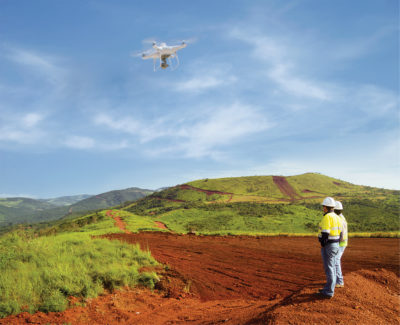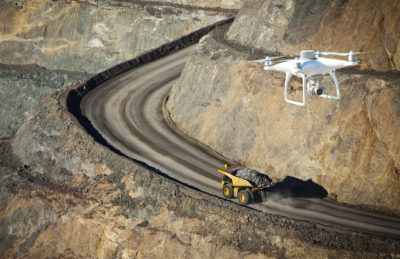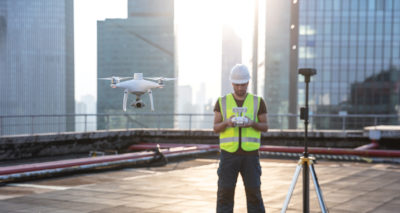 The construction industry is preparing for a significant increase in investment with the passage of President Biden’s historic infrastructure bill. With $110 billion set aside for roads, bridges, and other major infrastructure projects, contractors and surveyors will no doubt be in high demand to manage a range of civil developments across the country.
The construction industry is preparing for a significant increase in investment with the passage of President Biden’s historic infrastructure bill. With $110 billion set aside for roads, bridges, and other major infrastructure projects, contractors and surveyors will no doubt be in high demand to manage a range of civil developments across the country.
Even though the current administration is determined to fund these critical projects, they simultaneously have their sights set on tackling the climate crisis. In fact, the President has explicitly stated that the investment in new roads and bridges will focus on “climate change mitigation, resilience, equity, and safety” for all. He’s even set a for the United States to achieve a 50-52 percent reduction in net greenhouse gas pollution from 2005 levels by 2030.
These two goals may, at first glance, seem at odds. For example, reports have shown that building materials and construction account for approximately 11% of global greenhouse gas emissions. Further, almost all construction activities require the use of diesel equipment, which is known to cause adverse effects on the surrounding environment.
However, we simply can’t afford to abandon these new developments at the risk of hindering long-term environmental goals. Especially in rural areas, building bridges and roads in the immediate future will be essential to improving the safety of communities as many still rely on very limited roads to transport basic resources and emergency supplies.
So, how can we ensure that this increase in construction doesn’t move us farther away from our climate goals? We can start by implementing sustainable practices on every worksite and using new technologies as the cornerstone of this transition.
Tech to the Surveyor’s Rescue
 Contractors today are highly open to how tech can play a key role in their projects. In recent years, drones, and drone surveying tech specifically, have been instrumental in streamlining large-scale developments—deployed during the pre-planning and estimating phases, as well as used throughout the project.
Contractors today are highly open to how tech can play a key role in their projects. In recent years, drones, and drone surveying tech specifically, have been instrumental in streamlining large-scale developments—deployed during the pre-planning and estimating phases, as well as used throughout the project.
Although the industry has primarily relied on tools like theodolites to manually conduct land surveys, this method is tedious and can take weeks to complete for large-scale construction projects. And even after initial data collection is complete, it can take teams weeks to aggregate and process this information before they can start the building process.
Alternatively, drone surveying provides a certain level of efficiency and accuracy that is not always possible when using traditional surveying methods, and this efficiency naturally lends itself to expedited project timelines and less wasteful, more sustainable worksites.
In terms of mechanics, drone surveying typically entails using aerial drones with downward-facing sensors to capture images of the worksite from different angles. Each image is tagged with corresponding coordinates, so surveyors have a quick point of reference for the duration of the project. Drones also can capture up to thousands of topographical survey points on a large worksite, equipping contractors with comprehensive data sets to expedite the planning process.
In addition to fast-tracking the actual surveying timeline, using drones to collect and aggregate site information means that this data can be quickly shared with and easily accessed by the entire site planning team.
Efficiency Drives Sustainability
While developers are already saving time and money with the latest surveying technologies, they can use this tech to effectively reduce their project’s impact on the environment and preserve surrounding resources.
Minimizing the Impact on Unspoiled Environments
 Traditional surveying processes require construction teams to not only cut sight lines, but also make room for larger surveying crews and additional equipment. Alternatively, drones can launch from almost anywhere, meaning that the surrounding environment is not disrupted unnecessarily.
Traditional surveying processes require construction teams to not only cut sight lines, but also make room for larger surveying crews and additional equipment. Alternatively, drones can launch from almost anywhere, meaning that the surrounding environment is not disrupted unnecessarily.
In turn, contractors can reduce their project’s impact on trees, plants, and other wildlife, and effectively comply with land use regulations. This kind of precision has not always been easy or possible when moving large amounts of earth, but drone surveying has paved the way for preserving unspoiled environments without overburdening individual crew members.
Reducing Rework
When work is done incorrectly on construction sites—whether it be a result of miscommunication, changing regulations, or other factors—firms must push out project timelines and allocate even more money and resources to rework. In fact, have found that more than 30% of construction work on an average project is likely related to rework, compromising efficiency, wasting resources, and increasing costs.
With the use of drone technology, field engineers can track job progress and monitor for these inconsistencies much more efficiently. This allows them to catch problems early on, reduce overall rework, and conserve materials and fuel burn.
Tracking job progress is traditionally a labor-intensive endeavor, with contractors having to conduct manual walks around the worksite to catalogue progress in physical logs or individual devices that may not allow for easy sharing with project stakeholders. Because drone data is designed to be shared widely, communication among teams can be streamlined. shows that miscommunication and poor project data account for 48% of all rework on US construction sites, and both of these issues can be mitigated with the use of drone technology.
Reducing Fuel Burn
Diesel use and fuel burn from construction equipment can have a significant impact on the environment, increasing greenhouse gas emissions and potentially polluting the surrounding area. For example, an excavator burns up to an hour on average, while scrapers can burn up to 16 gallons per hour. Not to mention fuel costs are typically the second highest expense on worksites, only after wages. Further, even just one bulldozer can produce as much particulate matter as.
To minimize the environmental impact from fuel burn, contractors can use drone data to efficiently dispatch heavy machinery on the worksite. Because drones can accurately measure different zones for a project during the planning process, contractors are able to prevent earthmoving equipment from making unnecessary trips across the worksite or from sitting idle with engines running for too long. This way, firms can lower carbon emissions and simultaneously reduce overall fuel costs.
Identifying Potential Hazards
In the same vein of streamlining workflows and boosting efficiency, drones can enhance worksite safety by identifying risks and hazards even before the team’s first day on the job. By integrating this step into the pre-planning process, crews can come fully prepared to work around these hazards and prevent projects from being delayed down the road.
Locating potential hazards, like underground utilities, not only ensures the safety of individual employees during the construction stage, but also helps eliminate any rework, reduce wasteful fuel burn, and preserve much-needed materials.
The Future is Bright
It’s no secret that even more progress can be made toward improving sustainability in the construction sector, but the good news is that new technologies are available that can have a significant impact when it comes to preserving resources, eliminating environmental impacts, and improving efficiency. Deploying drones and drone surveying technology is just one of the many ways in which contractors can work toward aligning their development projects with environmental goals, as well as play a key role in protecting the planet. The time is now to implement these technologies, and the industry is just getting started.
Rory San Miguel is the Sydney-based CEO and co-founder of Propeller Aero, which provides cloud-based data visualization and analytics to worksites. Every day, thousands of professionals in mining, aggregates, waste management, and construction operations worldwide rely on Propeller to capture, analyze, and share accurate data about their worksites and assets.